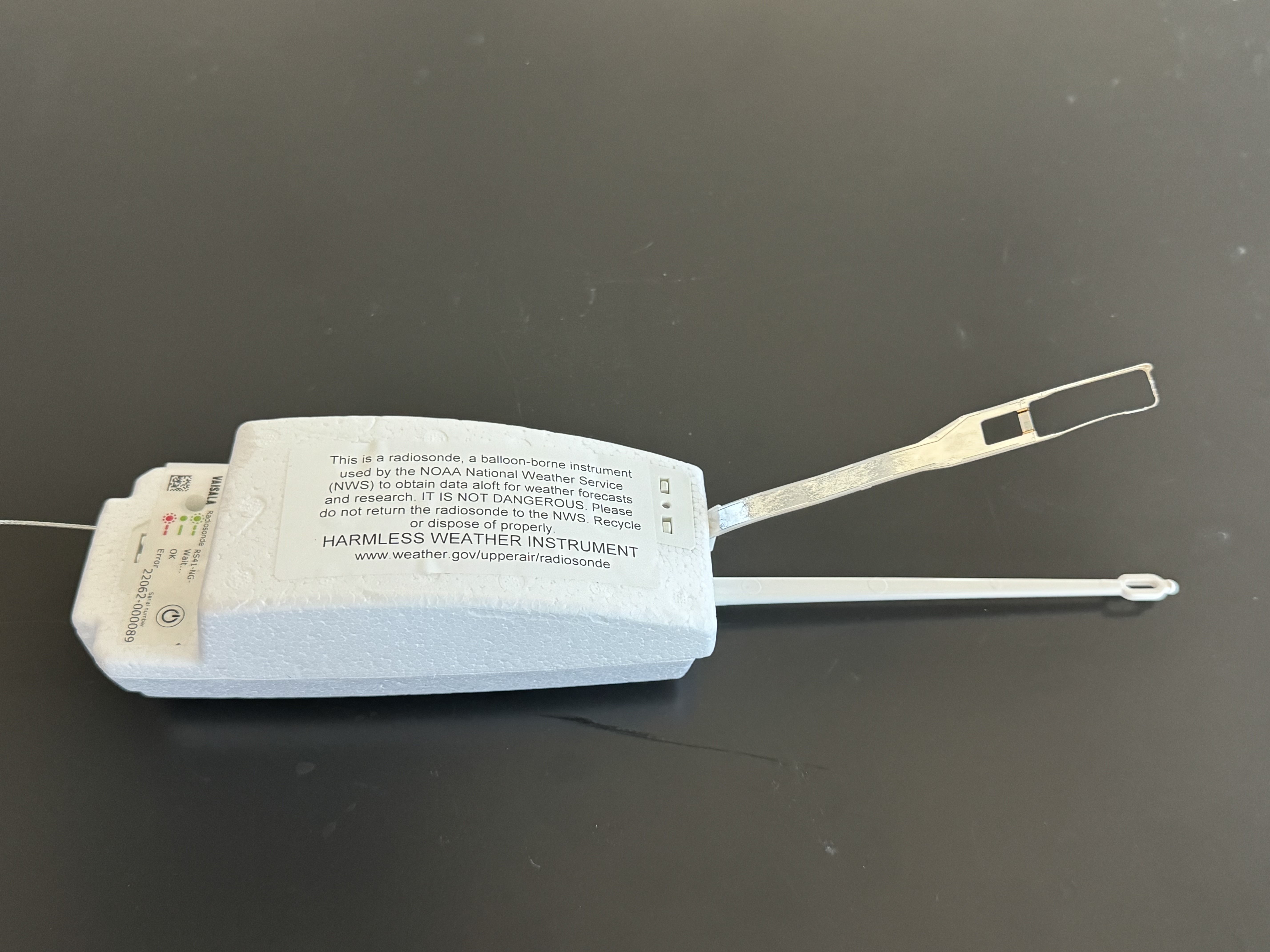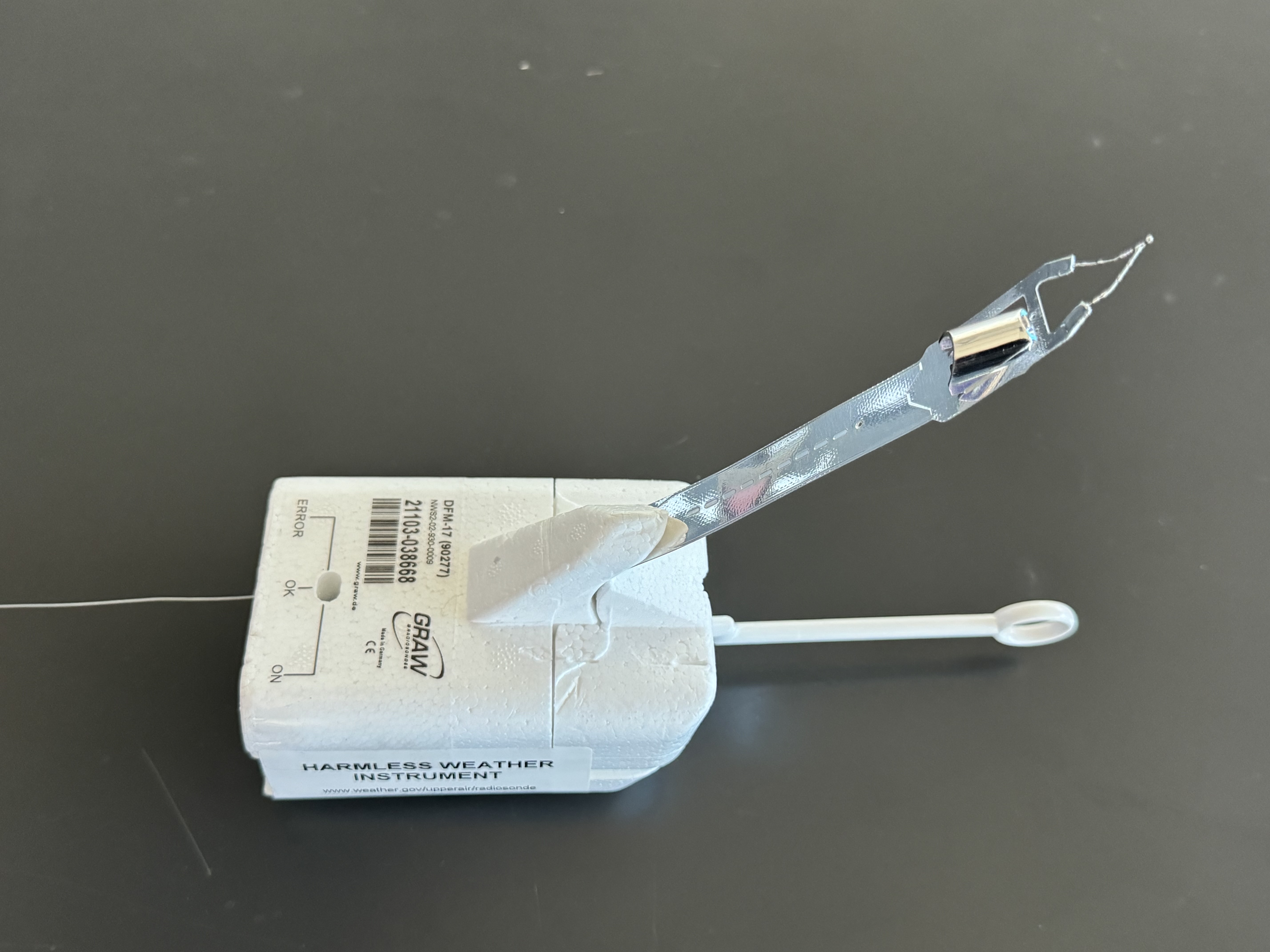 |
 |
| Vaisala RS41-NG Radiosonde | GRAW DFM-17 Radiosonde |
If you have found a National Weather Service (NWS) Radiosonde, it is safe to handle. Photos of radiosondes commonly used by the NWS are shown above.
Around 76,000 radiosondes are flown every year within the NWS upper air network. This means that an opportunity to find one of these instruments does exist! NWS radiosondes will have very specific language printed on at least three sides of the radiosonde stating “Harmless Radiosonde Instrument”, a website address that brings you to this location, and a NOAA image, all found on the radiosondes labels. Other types of radiosondes found within our network may be related to academia, Incident Meteorologists (IMETs), hobbyist, and even outside Meteorological services such as Canada or Mexico.
If you do encounter a radiosonde, here are a few suggestions on what to do:
1. Radiosondes are attached to cotton twine which may also be attached to an orange parachute and/or shredded balloon. If you come upon a radiosonde, please cut the string that attaches to the radiosonde, and discard the remaining items. This helps keep the environment clean.
IMPORTANT: On rare occasions the balloon may be found partially inflated with gas. The gas inside the balloon may be flammable hydrogen. If the balloon is inflated, keep away from it and contact your local fire department for safe disposal.
2. Currently all radiosondes are encased in a Styrofoam covering to protect the electronics and batteries from extreme temperatures and moisture intrusion. Most likely the radiosonde you find will not be powered on, as the battery life has run out. If you find a radiosonde that still has a power light on, the radiosonde is still transmitting data, but rest assured, the data needed by the NWS has already been sent to its data partners, and the battery life will end relatively soon.
3. There is no need to return radiosondes back to the NWS. This means that it is up to you to make the decision on what to do with the radiosonde. Some people keep the unit as a keepsake and conversation starter, others have donated to local schools or science clubs. In the event that the radiosonde is severely damaged, or you just don’t want it, feel free to discard the unit, following local disposal regulations.
4. If you have any additional questions, would like to let the NWS know you found a radiosonde, or would like some information on the radiosonde you found, please reach out to upperair@noaa.gov or NWS.PA@noaa.gov